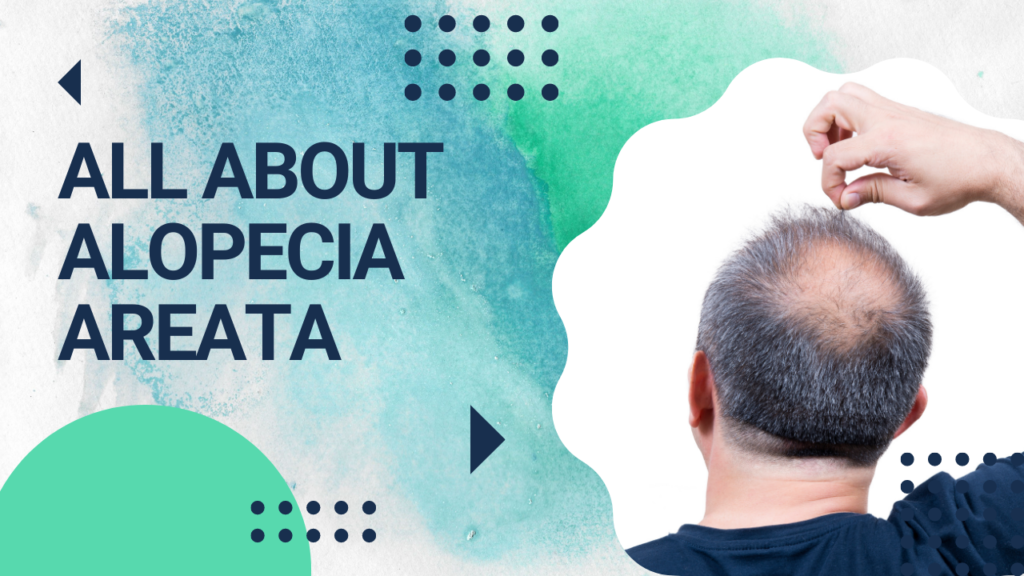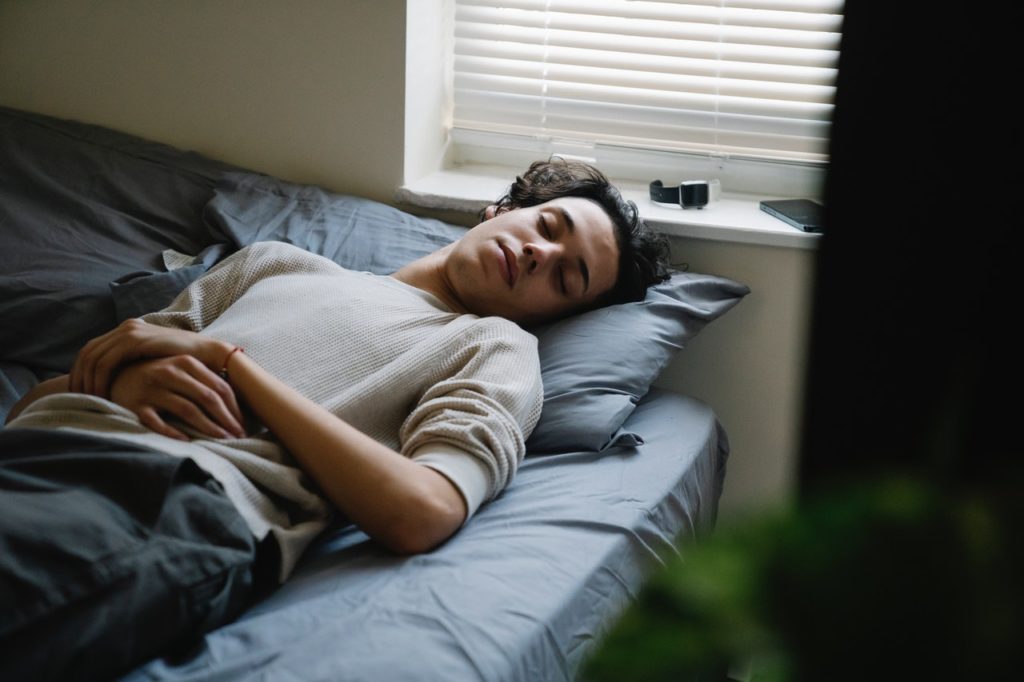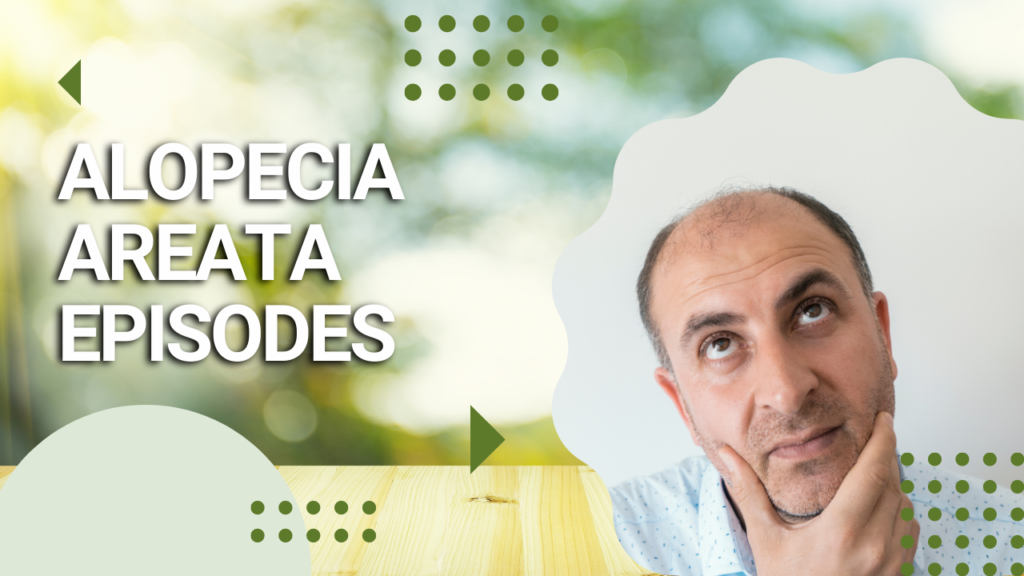Alopecia areata (AA) is a condition where hair falls out. It affects around 2% of the population. The cause is unknown, but it seems to run in families.
AA is usually diagnosed between ages 15 and 25. It causes patches of baldness or hair loss on the scalp, face, eyebrows, eyelashes, armpits, groin, buttocks, pubic area, chest, back, neck, shoulders, arms, legs, and feet. Hair regrowth occurs within 6 months to 3 years after onset. There is no cure. Treatment focuses on reducing stress, improving nutrition, and controlling other medical conditions.
Alopecia areata is a chronic autoimmune disease characterized by patchy hair loss. It is caused by inflammation of the hair follicles. This leads to the destruction of the hair follicle and subsequent shedding of the hair.
Contents
Alopecia Areata Causes
The exact cause of alopecia areata has not been determined. However, there are many theories about its cause. These include:
1. Genetics
Genetics plays a major role in alopecia areata. You may have seen a family where the father is bald, the son is most likely to be bald or maybe bald in the future. If one parent has this disorder, then chances are that their child will also have it. People with a family history of baldness are more likely to develop AA than those without such a history.
2. Stress
Stress can trigger an attack on AA. When you feel stressed, your body releases chemicals called “stress hormones” which make you feel anxious and worried. Sometimes these stress hormones affect your immune system, causing it to become overactive. This results in the release of substances into the bloodstream that damage the hair follicles.
3. Hormonal Changes
Hormones play an important role in regulating the growth of hair. Women experience hormonal changes during pregnancy and menopausal periods. During puberty, sex hormones stimulate hair growth. After menopause, estrogen levels drop, resulting in less hair growth.
4. Autoimmune Diseases
Autoimmune diseases occur when the body’s own immune system attacks itself. In some cases, this attack damages the cells that produce hair. For example, people who suffer from lupus have a higher risk of developing Alopecia Areata.
5. Infections
Some viruses and bacteria can infect the hair follicles and lead to hair loss. Bacterial infections can result in scarring of the skin. Viral infections can cause hair loss.
6. Medications
Certain medications can cause hair loss. Examples of drugs that can trigger hair loss are:
- Antibiotics
- Birth control pills
- Chemotherapy agents
- Cortisone-based medicines for arthritis
7. Nutrition Deficiency
A lack of certain nutrients in the diet can cause hair loss. Vitamin C deficiency can cause hair loss because vitamin C helps form collagen, the protein found in hair follicles. Iron deficiency can cause hair loss as well.
8. Medical Conditions
Medical conditions that can cause hair loss include thyroid disorders, diabetes, and liver disease.
9. Trauma
Sometimes hair loss happens due to trauma. An injury to the head can cause hair loss. The shock of the injury can start a chain reaction that affects hair follicles.
10. Other Factors
Other factors that can cause hair loss are:
- Certain foods
- Smoking
- Sun exposure
- Overuse of hair products
- Lack of sleep
11. Psychological Disorders
Psychological disorders like depression can contribute to hair loss. Depression causes a person to lose interest in daily activities. It can also interfere with sleep patterns.
12. Illnesses
People suffering from illnesses like cancer, HIV/AIDS, and hepatitis often experience hair loss.
13. Environmental Pollution
Environmental pollution can cause hair loss. Some pollutants can damage the scalp and cause inflammation.
14. Physical Exertion
Physical exertion can cause hair loss. Athletes often complain about losing hair after they compete.
15. Pregnancy
Pregnant women sometimes experience hair loss. This is caused by increased levels of progesterone, a hormone produced by pregnant women. Progesterone stimulates hair follicle production. However, high levels of progesterone can also cause hair thinning and breakage.
16. Menstruation
Menstruating women usually experience hair loss. This occurs because the hormones associated with menstruation cause hair follicles to shrink.
17. Ageing
As we age, our bodies begin to slow down. Hair follicles stop producing new hairs. This leads to hair loss.
Alopecia Areata Symptoms
Symptoms of Alopecia Aretas appear suddenly and may last anywhere from weeks to years. Hair loss usually starts on one side of the scalp and spreads over time. There are two types of alopecia Areata: focal and generalized. Focal alopecia areata occurs when there is only one spot of hair loss. Generalized alopecia arete occurs when there is complete hair loss across the entire scalp.
The most common symptom of Alopecia Areata is patchy hair loss on the scalp or other parts of the body. People with Alopecia Areteat may notice their hair falling out in clumps. Sometimes, the hair falls out gradually over time. In other instances, it falls out suddenly.
Patients may notice a change in color. Sometimes, the skin around the affected area turns red. In severe cases, the patient may lose all his/her hair.
People with alopecia are at risk for depression and anxiety. Therefore, it is important to seek professional counseling.
Alopecia is common in children. Most children outgrow the condition before adulthood. However, some adults continue to suffer from the disorder. Alopecia areata affects the body’s immune system. Hair loss occurs because the immune system attacks hair follicles. This attack stops the hair from growing and causes the hair to fall out. Alopecia areata is an autoimmune disease characterized by patches of baldness. It affects about 50 million Americans.-” Hair loss can happen to everyone, especially men over 50.
Alopecia Areata Diagnostics and Treatment
There is no cure for Alopecia Aretea. The symptoms will eventually go away as the body heals itself. Treatment focuses on controlling the symptoms until the hair regrows.
Treatment options include:
1. Topical Treatments
Topical treatments work best for mild cases of Alopecia Areata. These treatments contain corticosteroids that reduce swelling and itching. They help prevent further hair loss.
2. Dandruff Shampoo
Dandruff shampoos contain chemicals that wash off dead cells. These chemicals stimulate the growth of new hair. If you have dandruff, use a shampoo that contains salicylic acid. Salicylic acid helps remove the buildup of dead skin cells.
3. Minoxidil
Minoxidil is a drug that increases blood flow to the scalp. As blood flows through the scalp, it nourishes hair follicles. Minoxidil has been shown to increase hair growth in people who have lost all their hair.
4. Cortisone Creams
Cortisone creams are used to treat inflammation. They also help control itching. Cortisone creams should be applied twice daily.
5. Antihistamines
Antihistamines calm down the nerves and stop itching. Antihistamine medications are available without a prescription.
6. Oral Medications
Oral medications are prescribed if topical treatment does not work. Oral steroids are often used to slow down the rate of hair loss.
7. Laser Therapy
Laser therapy uses light waves to destroy hair follicles. Patients must wear protective goggles during laser therapy.
8. Psychological Counseling
Psychological counseling is recommended for patients with Alopecia Areata. Depression and anxiety are common among those suffering from the condition.
9. Hair Transplantation
Hair transplantation involves taking grafts from one part of the head and moving them to another area. This technique works well for individuals with thinning hair.
10. Hair Replacement Devices
Hair replacement devices are designed to look like real hair. There are many types of these products including wigs, toupees, and hairpieces.
Alopecia Areata Prevention
You can take steps to avoid Alopecia Areata. You may want to consider using a hat or covering your head when outside. In addition, you can protect yourself against sun exposure. Use sunscreen lotions regularly. Wear hats and cover up when outdoors. Avoid tanning beds. Here are some tips to prevent Alopecia Areata Prevention:
- Use a hat or cover your head when outside.
- Protect yourself against sun exposure.
- Avoid tanning beds.
- Don’t shave your head.
- Wear a wig or a hairpiece.
- Get psychological counseling.
- Take care of your diet.
- Take vitamins.
- If you’re pregnant, don’t get too stressed out.
- Do some exercise.
- Try to relax.
- Take good care of your health.
Conclusion
In conclusion, Alopecia Areata is a condition where hair falls out due to unknown causes. It can affect anyone at any age but usually occurs during childhood or adolescence. It may also occur after pregnancy or as a side effect of certain medications. There is no cure for alopecia areata, but treatment options include topical steroids, oral steroids, immunosuppressants, and hair transplant surgery. Some people are attacked by Alopecia Areata due to their family history. However, most cases are sporadic. The cause of this disease is still unclear.







